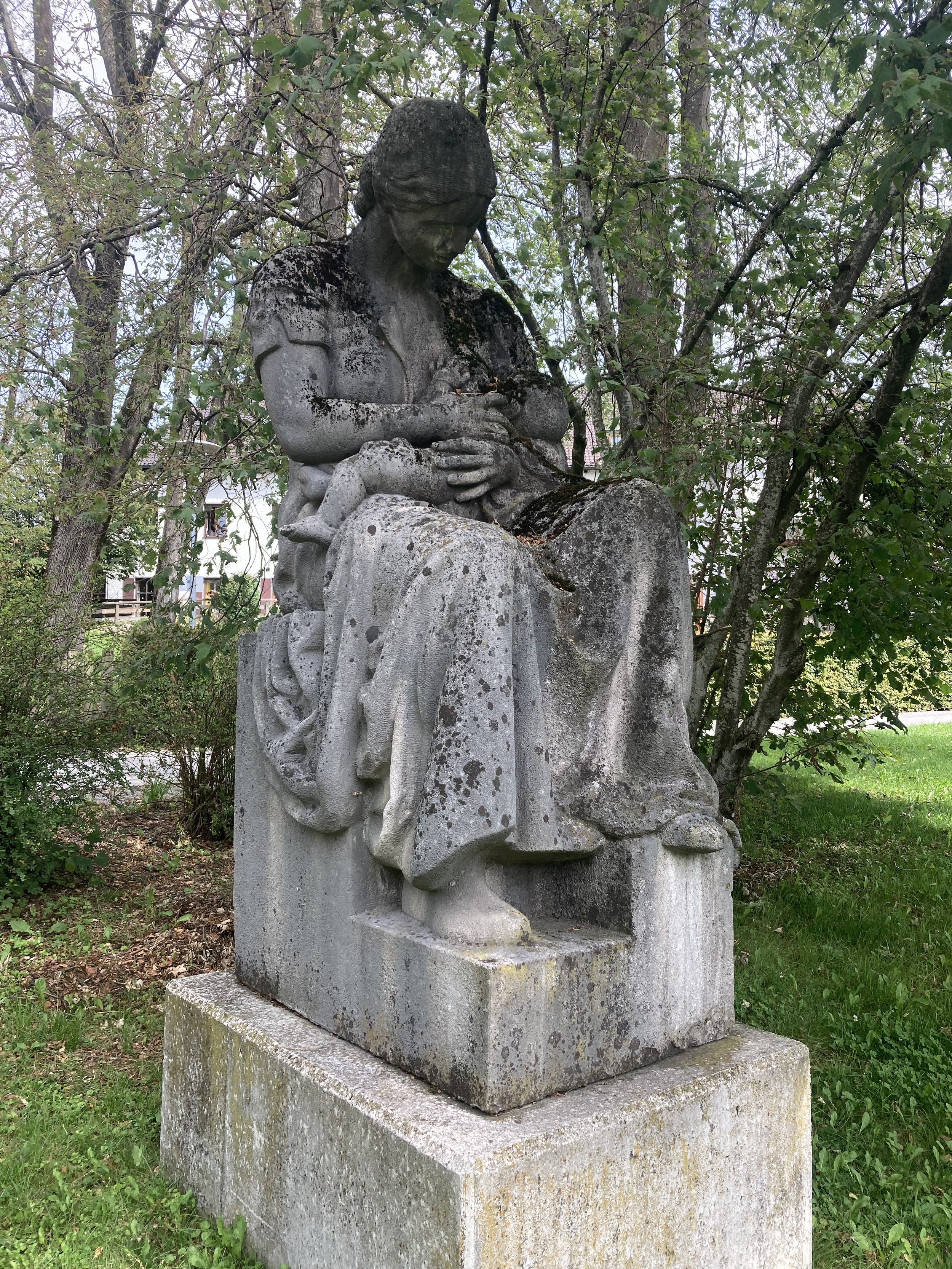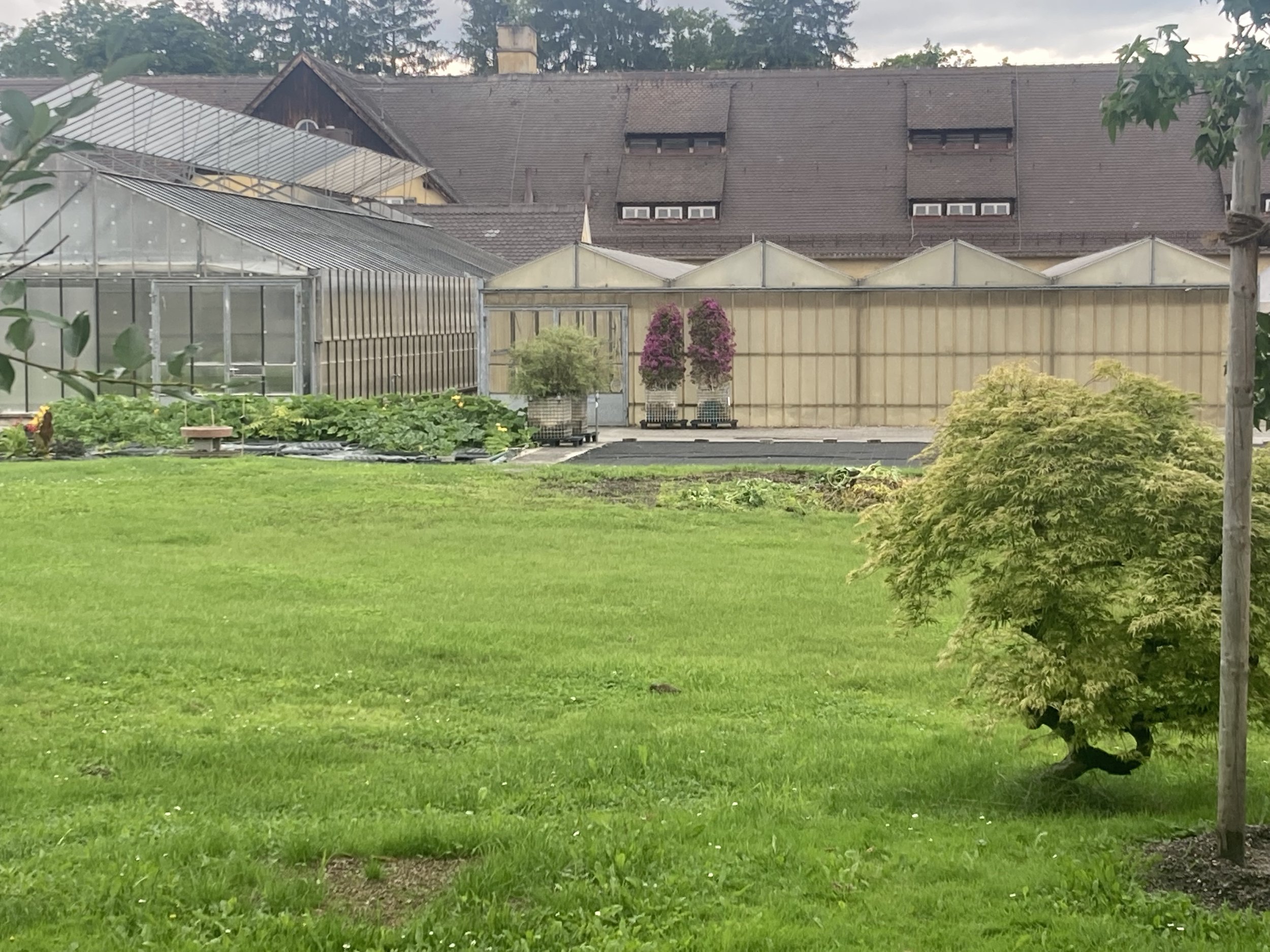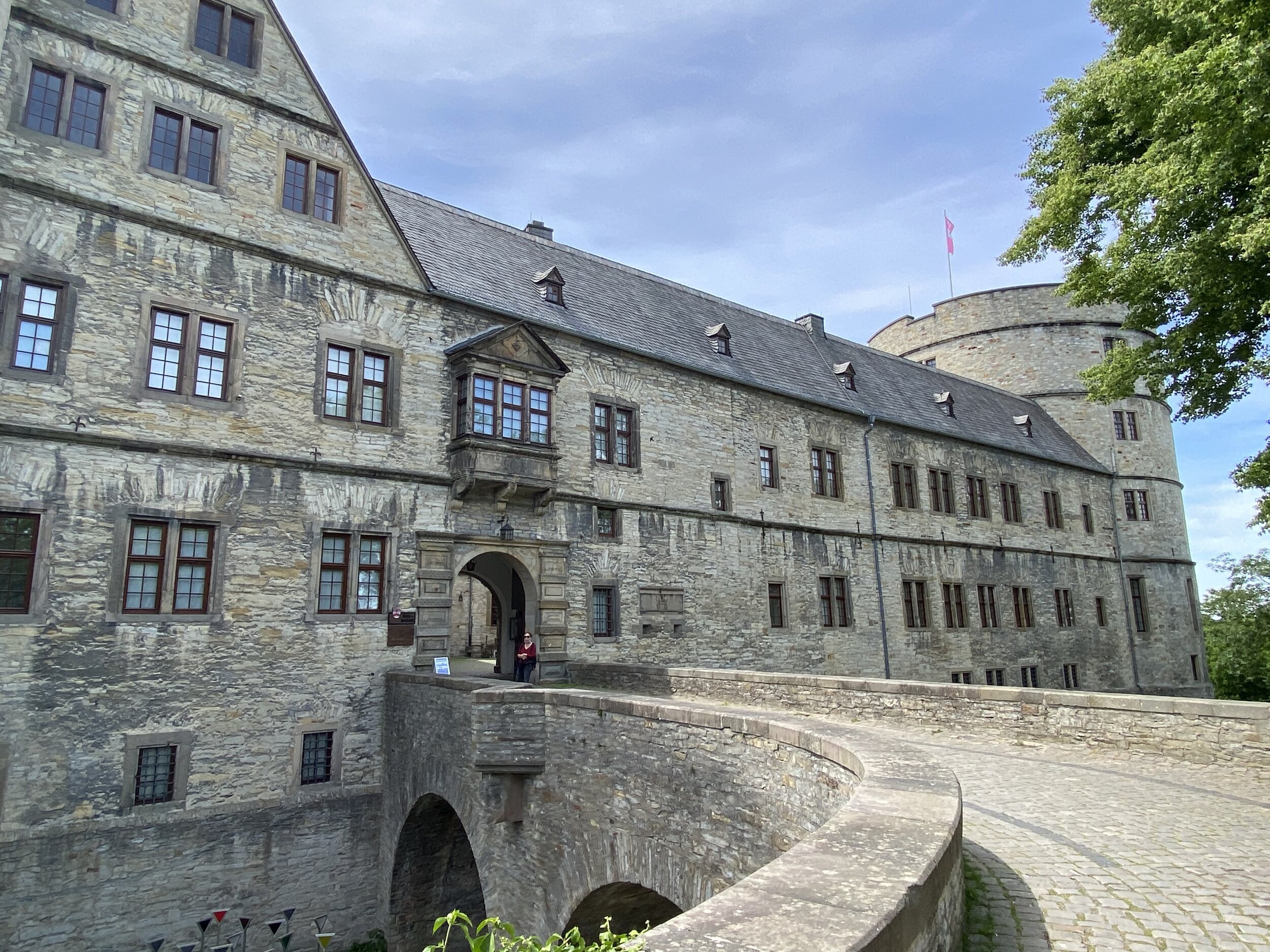PART 3: The long-awaited research trip to Germany
The last time I talked about my novel, I mentioned that thing came to a standstill while I was waiting for Germany to open its borders.
Reader, I finally made it.
In late June of 2021, the borders opened. I left in early July for just shy of a month and crisscrossed the country by train.
Lebensborn homes
The first Lebensborn home I visited was an hour or so train ride outside of Munich, and I met with the two people who now run the place, which is, in a turn of events that is ironically redemptive, a home for the mentally disabled. They shared some gems of information about Lebensborn, like a copy of the daily schedule the mothers-to-be followed.
Only one building from the Nazi regime remained, and it had been highly remodeled. But the room that had been used as a cafeteria was mostly unaltered, so I stood in there for a while and tried to get as creeped out as I could.
The other home I visited is now a boarding school for teenage boys in a historic village in central Germany. I didn’t get a response to the emails I sent in advance, so I just showed up and used Google Translate to get the cook to show me around. She was pretty weirded out by it/me, but I appreciated her help nonetheless.
Only the original building remains, heavily remodeled. But I like to think the grounds were unchanged. There was a picnic table, a gazebo, and for some reason a kiln.
I also visited a villa that served as administrative offices for Lebensborn (plus maybe some other, more secret stuff), and is a significant location in my novel. I just walked right up to the front door and knocked until a nice theater student let me in and allowed me to wander the creaky, Art Deco-style halls, which seemed largely unchanged.
I imagined Gregor Ebner, medical administrator of Lebensborn — a real creep who got away with everything — living and working here.
Dachau
I visited Dachau, a sobering experience. I also walked the 1.5 kilometers or so to the experimental herb garden that prisoners referred to as The Plantation, where one of my characters is assigned as a forced laborer.
It’s eerily pastoral, given that this was the site of one of the worst work details a person could be assigned to.
Archives
In the Lebensborn archives located in a teeny tiny (adorable) town called Bad Arolsen, I spent two days sifting through archives and downloading thousands of Lebensborn documents — none of which I could read since I don’t know German — to later decipher with the help of the internet and translator.
The employees there were wonderfully helpful, and said that no one there had ever downloaded as many documents as I did. Not to brag or anything.
I also spent many an hour in the Bremen archives, looking at letters, logs, reports, photos, objects that the people I wrote about wrote and used.
Wewelsburg Castle
I spent a night in Wewelsburg Castle, formerly the occult HQ of the SS, which is also a setting in the book. There’s a youth hostel in it now, in addition to being a historic site with a museum on the SS. (I had to pay extra to stay there on account of no longer being a youth.)
What strikes me about these locations is how fastidiously Germany has scrubbed its locations of, well, everything. The few historic buildings that weren’t leveled by bombs have been cleaned and remodeled so they feel new. It’s note like Spain or Italy or England, where many buildings have a feeling of oldness when you walk into them. You know without being told that lots of shit happened here. Not so with Germany — which isn’t a bad thing, but a tad inconvenient for me.
Bremen and Lena
Up north in Bremen, I serendipitously met Lena, a retired teacher and history buff in Bremen who volunteers at the genealogical society there.
Lena met me at the train station when I arrived in Bremen, the port city in northern Germany where my main character is from. Lena answered my endless questions and told me stories of her family.
She gave me an itinerary she’d planned, with visits to various museums and sites, and guided tours of relevant neighborhoods. That included a surprise visit to a home in my character’s neighborhood that was built in the 40s, which the owner graciously opened up to let me nose around in. Afterwards she showed me her family’s photos from that time.
Things started to feel magical. I couldn’t believe the access that was given without me even asking.
Interviews
Lena arranged interviews with three women in their 90s and 100s who were alive during the Nazi regime. This was the best part of it all.
We met at cafes and ate cake and drank coffee, which is the thing to do on a German afternoon. It’s not even optional.
There was Frau Rennert, who remembers going to the roof to watch Allied bombs fall on the city and thinking they looked like Christmas trees lights. She talked about fish a lot — selling the fish her grandfather caught, eating it pickled so the bones would be soft, how sick everyone was of salmon. Maids would put it in their contract: they would have salmon in their meals no more than three times per week.
There was Frau Rolfs, who was kicking it in a retirement community and living her best life. I’m pretty sure she was the queen of the complex. She grew up in the same working class neighborhood as my main character and had tons of stories about her childhood. She wanted to be a ship builder and loved reading books about seafarers. In winter, the little lakes around town froze and everyone ice skated on them. And when she got sick, her grandmother tied an onion to her neck as a remedy…
And there was 100-something Frau Söhnlein, whom we met at her home. She used to be a potter and served us coffee out of her handmade pot and mugs. She told Lena that if we brought a cake, to make it a fruit cake, and so we did. From her I learned about the Bremen boating culture, how she fell out of a boat when she was small and didn’t yet know how to swim, and her favorite dress, which was forest green with silver trim and looked like a hunter’s dress.
The insights I gained from Lena and the women and the local historians I met were invaluable. Many of them made their way into the novel.
What Lena, these three women, the archivists, and so many other people did to help me out with this project stuns me with gratitude every time I think about it. But it wasn’t for me—it was for this book. It really takes a village.
In the next installment: revision revision revision.








